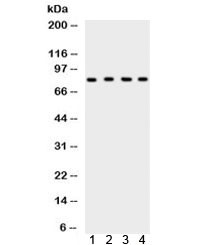Cookie preferences
This website uses cookies, which are necessary for the technical operation of the website and are always set. Other cookies, which increase the comfort when using this website, are used for direct advertising or to facilitate interaction with other websites and social networks, are only set with your consent.
Configuration
Technically required
These cookies are necessary for the basic functions of the shop.
"Allow all cookies" cookie
"Decline all cookies" cookie
CSRF token
Cookie preferences
Currency change
Customer-specific caching
FACT-Finder tracking
Individual prices
Selected shop
Session
Comfort functions
These cookies are used to make the shopping experience even more appealing, for example for the recognition of the visitor.
Note
Show the facebook fanpage in the right blod sidebar
Statistics & Tracking
Affiliate program
Conversion and usertracking via Google Tag Manager
Track device being used

| Item number | Size | Datasheet | Manual | SDS | Delivery time | Quantity | Price |
|---|---|---|---|---|---|---|---|
| NSJ-R31953 | 100 µg | - | - |
3 - 10 business days* |
755.00€
|
If you have any questions, please use our Contact Form.
You can also order by e-mail: info@biomol.com
Larger quantity required? Request bulk
You can also order by e-mail: info@biomol.com
Larger quantity required? Request bulk
0.5mg/ml if reconstituted with 0.2ml sterile DI water. XRCC5 (X-ray Repair, Complementing... more
Product information "Anti-Ku80"
0.5mg/ml if reconstituted with 0.2ml sterile DI water. XRCC5 (X-ray Repair, Complementing Defective, In Chinese Hamster, 5), also known as Ku80 or Ku86, is a protein that in humans, is encoded by the XRCC5 gene. The XRCC5 gene encodes the 80-kD subunit of the Ku autoantigen, a heterodimer which contributes to genomic integrity through its ability to bind DNA double-strand breaks and facilitate repair by the nonhomologous end joining (NHEJ) pathway. The XRCC5 gene is mapped to 2q35. Human colon cancer cells heterozygous for Ku86 are haploinsufficient with an increase in polyploid cells, a reduction in cell proliferation, elevated p53 levels, and a slight hypersensitivity to ionizing radiation. Functional inactivation of the second Ku86 allele results in cells with a drastically reduced doubling time. The Ku86 locus is essential in human somatic tissue culture cells by experiments demonstration. A rare microsatellite polymorphism in XRCC5 is associated with cancer in patients of varying radiosensitivity. Protein function: Single-stranded DNA-dependent ATP-dependent helicase. Has a role in chromosome translocation. The DNA helicase II complex binds preferentially to fork-like ends of double-stranded DNA in a cell cycle-dependent manner. It works in the 3'-5' direction. Binding to DNA may be mediated by XRCC6. Involved in DNA non-homologous end joining (NHEJ) required for double-strand break repair and V(D)J recombination. The XRCC5/6 dimer acts as regulatory subunit of the DNA-dependent protein kinase complex DNA-PK by increasing the affinity of the catalytic subunit PRKDC to DNA by 100-fold. The XRCC5/6 dimer is probably involved in stabilizing broken DNA ends and bringing them together (PubMed:12145306, PubMed:20383123, PubMed:7957065, PubMed:8621488). The assembly of the DNA-PK complex to DNA ends is required for the NHEJ ligation step. In association with NAA15, the XRCC5/6 dimer binds to the osteocalcin promoter and activates osteocalcin expression (PubMed:20383123). The XRCC5/6 dimer probably also acts as a 5'-deoxyribose-5-phosphate lyase (5'-dRP lyase), by catalyzing the beta-elimination of the 5' deoxyribose- 5-phosphate at an abasic site near double-strand breaks. XRCC5 probably acts as the catalytic subunit of 5'-dRP activity, and allows to 'clean' the termini of abasic sites, a class of nucleotide damage commonly associated with strand breaks, before such broken ends can be joined. The XRCC5/6 dimer together with APEX1 acts as a negative regulator of transcription (PubMed:8621488). [The UniProt Consortium]
| Keywords: | Anti-Ku86, Anti-Ku80, Anti-TLAA, Anti-CTC85, Anti-CTCBF, Anti-G22P2, Anti-XRCC5, EC=3.6.4.-, Anti-Nuclear factor IV, Anti-DNA repair protein XRCC5, Anti-Thyroid-lupus autoantigen, Anti-86 kDa subunit of Ku antigen, Anti-Lupus Ku autoantigen protein p86, K |
| Supplier: | NSJ Bioreagents |
| Supplier-Nr: | R31953 |
Properties
| Application: | WB, IHC (paraffin) |
| Antibody Type: | Polyclonal |
| Conjugate: | No |
| Host: | Rabbit |
| Species reactivity: | human, mouse, rat |
| Immunogen: | Amino acids FSEEQRFNNFLKALQEKVEIKQLNHFWE of human Ku80 were used as the immunogen for the Ku80 antibody. |
| Format: | Purified |
Database Information
| KEGG ID : | K10885 | Matching products |
| UniProt ID : | P13010 | Matching products |
| Gene ID | GeneID 7520 | Matching products |
Handling & Safety
| Storage: | -20°C |
| Shipping: | -20°C (International: -20°C) |
Caution
Our products are for laboratory research use only: Not for administration to humans!
Our products are for laboratory research use only: Not for administration to humans!
Information about the product reference will follow.
more
You will get a certificate here
Viewed









